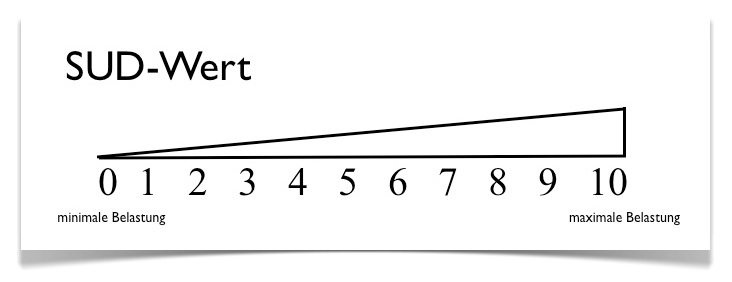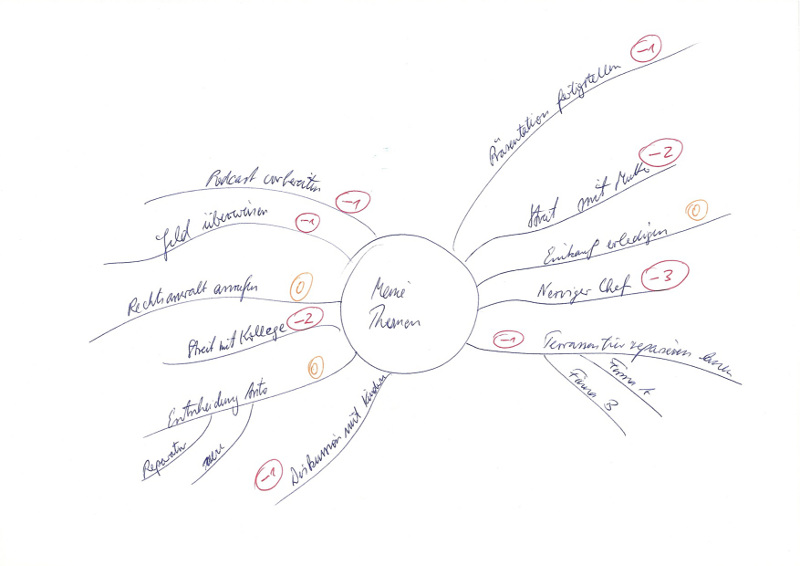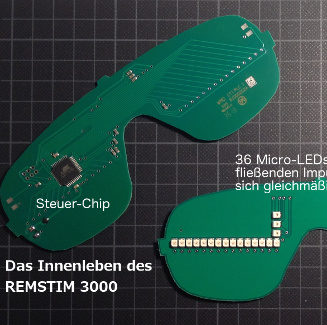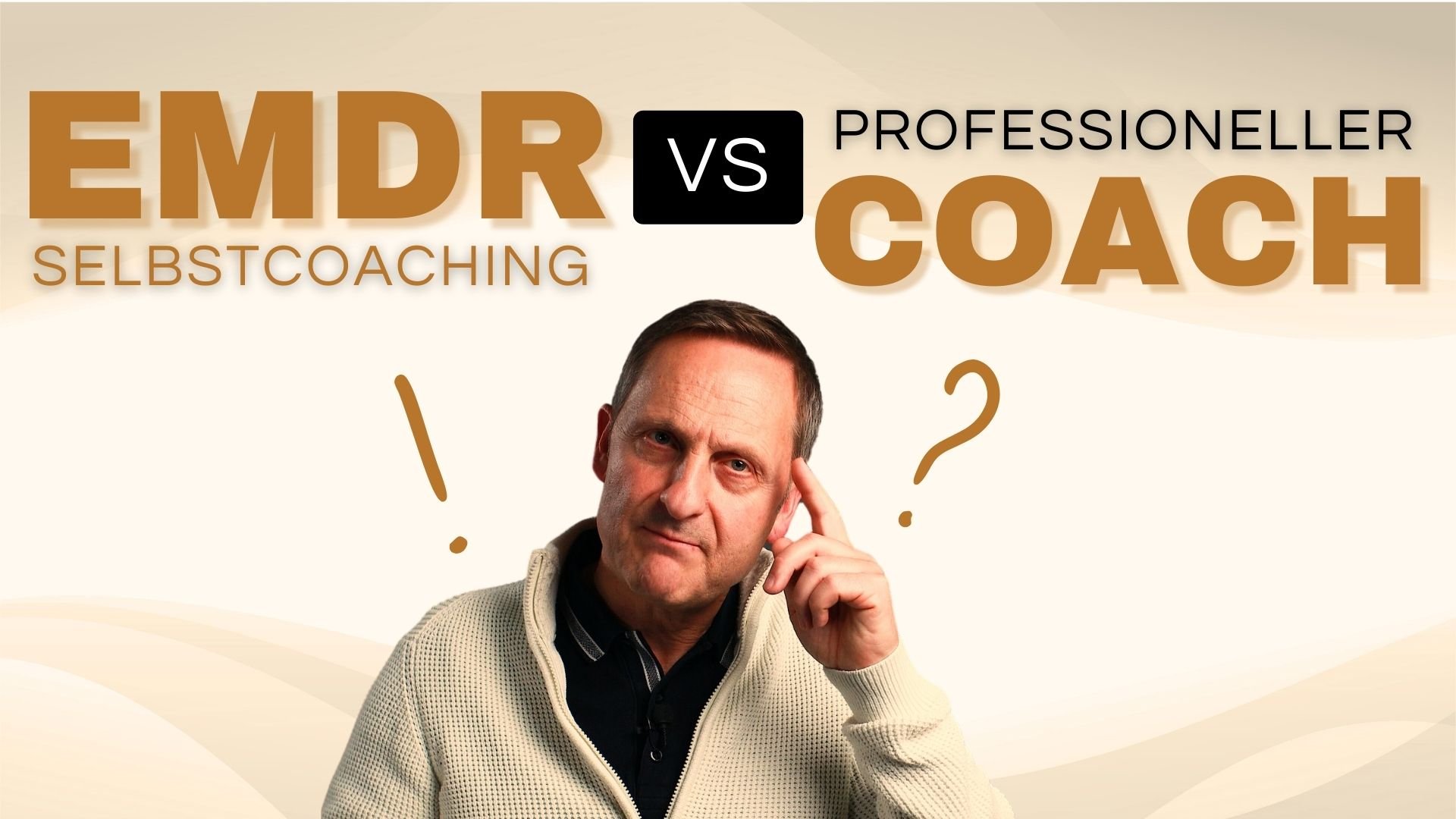 Right at the beginning of my EMDR workshops, I always ask all participants the same 2 questions:
Right at the beginning of my EMDR workshops, I always ask all participants the same 2 questions:
- Which topics are moving or burdening you right now?
- What is the level of your subjective touch when you think of a subject now?
By the second question at the latest, the first inquiries come: What do you mean by that? How am I to understand this? I admit that the wording seems a bit stilted. However, since the question is supposed to be exact, this wording has proven itself. Because this alone increases the attention of the participants. I could also formulate the question like this: What is your current stress level when you think about your subject now? But some people do not feel burdened in view of their subject but simply uncomfortable or even extremely comfortable. So to speak of a burden would not be correct. In contrast to coaching, therapy can be assumed to be stressful, but more on this later. It would be wrong to ask: How do you feel when you think about your subject? Because this is clearly about the extent, the degree of being touched, while the subject is in front of your eyes. One’s own perception of one’s internal emotional state is to be quantified here. To answer the second question, we use a scale from -10 to (+)10.  While -10 represents the worst imaginable stress, 0 symbolizes a neutral emotional state. 10 denotes a condition that cannot be improved: It doesn’t get any more beautiful or better than this! We also use the bipolar scale of subjective touching in the EMDR Self-Coaching Guide in 6 Steps. The classic EMDR protocol uses a scale from 0 to 10, with 0 representing no stress and 10 the maximum stress.
While -10 represents the worst imaginable stress, 0 symbolizes a neutral emotional state. 10 denotes a condition that cannot be improved: It doesn’t get any more beautiful or better than this! We also use the bipolar scale of subjective touching in the EMDR Self-Coaching Guide in 6 Steps. The classic EMDR protocol uses a scale from 0 to 10, with 0 representing no stress and 10 the maximum stress.  Since the classical EMDR protocol is used in therapy, this scale ranges from 0 to 10. After all, therapy is usually about assessing the degree of discomfort. As EMDR was developed by Francine Shapiro and comes from the USA, this scale is originally called subjective units of disturbance (SUD), which loosely translates as subjective degree of discomfort. In coaching or self-coaching, however, it is not uncommon for us to experience positive emotions, although usually only after an EMDR self-coaching application. And it is important to perceive and evaluate them as well. I therefore prefer the bipolar scale from -10 to (+)10.
Since the classical EMDR protocol is used in therapy, this scale ranges from 0 to 10. After all, therapy is usually about assessing the degree of discomfort. As EMDR was developed by Francine Shapiro and comes from the USA, this scale is originally called subjective units of disturbance (SUD), which loosely translates as subjective degree of discomfort. In coaching or self-coaching, however, it is not uncommon for us to experience positive emotions, although usually only after an EMDR self-coaching application. And it is important to perceive and evaluate them as well. I therefore prefer the bipolar scale from -10 to (+)10.
Why it is important to estimate and note the extent of subjective touching in the first place
The confrontation and evaluation of one’s own emotions alone supports the personal maturation process. Because we find that personal discomfort can take on varying degrees. Thus, stress with the boss may correspond to a -3 on our scale, while the accident on the road with one’s own vehicle represents a -5. If we then address the individual issue in EMDR self-coaching and assess the degree of stress again after the self-coaching, we usually find that there has been a welcome reduction in the feeling of stress(effects of EMDR). Assessing the expression of our discomfort before and after a self-coaching session makes us consciously aware that we are not helplessly at the mercy of our emotions and that we can successfully help ourselves. For example, Silke* reports that a -3 due to stress that arose when preparing a presentation under great time pressure for work became a (+)2 after self-coaching because of a personal re-evaluation of the situation. Silke looked at the situation afterwards as her boss had just given her this task because he knew that only she would be able to create a high quality presentation in a short time that would increase the company’s chances of winning the new client for them! All of a sudden she felt pride and set to work with a good feeling. The presentation was a success!
We gain more stress tolerance and have bigger goals
The awareness that we can successfully shape our own emotional world in a positive way increases our personal stress tolerance and emotional competence. Simply knowing that we don’t have to be afraid of stress and other emotional burdens allows us to welcome the challenges of our lives more openly and to tackle even greater goals if we so wish.(Increase daily resilience with EMDR and REMSTIM 3000) A helpful exercise that I like to do myself and often recommend goes like this: I briefly collect my current issues in the form of a mind map.
(More about mind maps: https://de.wikipedia.org/wiki/Mind-Map)  To do this, I sit down at my kitchen table with a cup of coffee or tea. I then ask myself “What could I do without right now?” and write down the things that bother me without thinking too much. This usually takes little more than 10 minutes. After that, I estimate the present degree of my subjective touching on each subject and note the value for each subject on the sheet. Then I decide on one of the issues whose magnitude is the highest, i.e. causes me a great deal of discomfort, go to my favorite chair and deal with it in an EMDR self-coaching session using the REMSTIM 3000 EMDR goggles. I then use the self-coaching guide in 6 steps. Since such a session usually lasts just a few minutes, I can sometimes work on a 2nd issue with approximately similar levels of discomfort. I often find that the issues are interrelated. If I de-stress my emotional reaction to one issue, I always have a good chance of looking at other acutely involving issues in a new and more beautiful light. In most cases, I feel much better afterwards. I feel calmer and more up to my tasks. The feeling that things were getting on top of me has given way to a new drive. However, there are certainly topics that I do not want to self-coach alone, as their degree of stress currently seems too high to me. I then decide to hold out on this issue and put it on hold for the time being to see if time here provides some relief. I often then venture into an EMDR self-coaching session at a later date due to a decreased level of stress. Sometimes I then take this issue to my coach. Read also Self-coaching or coaching with a coach – how do we decide? So if you haven’t yet downloaded the EMDR self-coaching guide free of charge, here’s your chance.
To do this, I sit down at my kitchen table with a cup of coffee or tea. I then ask myself “What could I do without right now?” and write down the things that bother me without thinking too much. This usually takes little more than 10 minutes. After that, I estimate the present degree of my subjective touching on each subject and note the value for each subject on the sheet. Then I decide on one of the issues whose magnitude is the highest, i.e. causes me a great deal of discomfort, go to my favorite chair and deal with it in an EMDR self-coaching session using the REMSTIM 3000 EMDR goggles. I then use the self-coaching guide in 6 steps. Since such a session usually lasts just a few minutes, I can sometimes work on a 2nd issue with approximately similar levels of discomfort. I often find that the issues are interrelated. If I de-stress my emotional reaction to one issue, I always have a good chance of looking at other acutely involving issues in a new and more beautiful light. In most cases, I feel much better afterwards. I feel calmer and more up to my tasks. The feeling that things were getting on top of me has given way to a new drive. However, there are certainly topics that I do not want to self-coach alone, as their degree of stress currently seems too high to me. I then decide to hold out on this issue and put it on hold for the time being to see if time here provides some relief. I often then venture into an EMDR self-coaching session at a later date due to a decreased level of stress. Sometimes I then take this issue to my coach. Read also Self-coaching or coaching with a coach – how do we decide? So if you haven’t yet downloaded the EMDR self-coaching guide free of charge, here’s your chance.
Yours sincerely, Thomas Buhl
*Name changed












